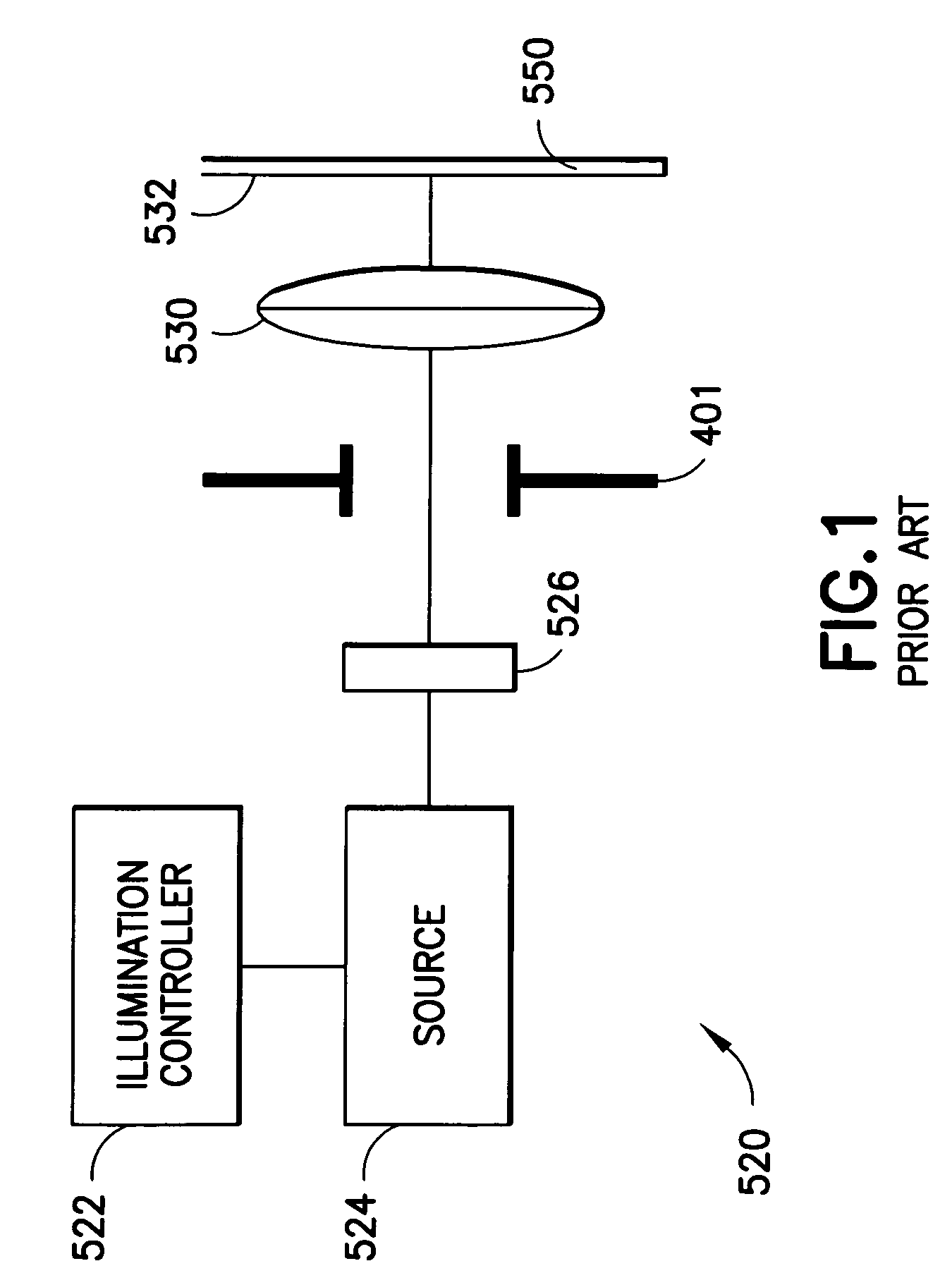Printing a mask with maximum possible process window through adjustment of the source distribution
a technology of source distribution and mask, applied in the field of manufacturing processes, can solve the problems of limited resolution of lithography tools, a challenge to improve ic manufacture, image distortion becomes a significant problem, etc., and achieve the effect of minimizing loss
- Summary
- Abstract
- Description
- Claims
- Application Information
AI Technical Summary
Benefits of technology
Problems solved by technology
Method used
Image
Examples
Embodiment Construction
[0042]Disclosed herein are methods and apparatus for maximizing the process window through adjustment of the source distribution.
[0043]As used herein, the process window is defined as a set of limits or tolerances for the various imaging parameters. The process window takes into account the extremes of the range of lengths and widths that are allowed for the shapes, and the range of dose and focus variations which print all shapes within the allowed extremes. In many cases, one set of shape limits corresponds to underexposed print conditions, and another set to overexposed conditions. Sample points may be used to delineate the limits of allowable shapes according to two-dimensional criteria.
[0044]An optimum source pattern is expressed as a list of optimum values for the intensity of light that should be input to the mask from each possible illuminating direction. The possible illuminating directions (also referred to as “source directions”) are defined using a gridding of direction ...
PUM
| Property | Measurement | Unit |
|---|---|---|
| repeat distance | aaaaa | aaaaa |
| repeat distance | aaaaa | aaaaa |
| repeat distance | aaaaa | aaaaa |
Abstract
Description
Claims
Application Information
 Login to View More
Login to View More - R&D
- Intellectual Property
- Life Sciences
- Materials
- Tech Scout
- Unparalleled Data Quality
- Higher Quality Content
- 60% Fewer Hallucinations
Browse by: Latest US Patents, China's latest patents, Technical Efficacy Thesaurus, Application Domain, Technology Topic, Popular Technical Reports.
© 2025 PatSnap. All rights reserved.Legal|Privacy policy|Modern Slavery Act Transparency Statement|Sitemap|About US| Contact US: help@patsnap.com



